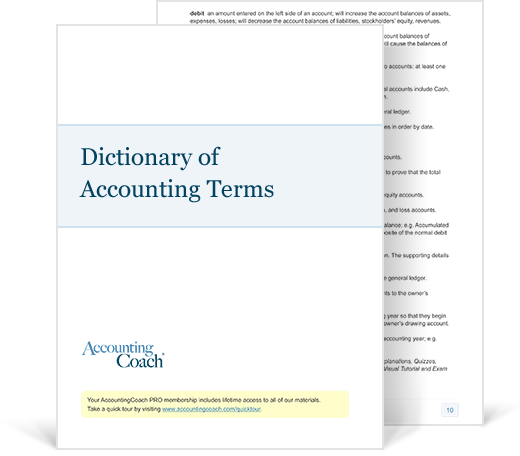Rockland County Dictionary of Accounting Terms Guide For Business Owners

Business owners and individual accounting and financial planning folks. Scott m. Aber, CPA of Rockland County, New York is pleased to offer you an online accounting dictionary in abbreviations and acronyms. Because of often indecipherable accounting lingo, our office location at 10 Esquire Road, Suite 1 New City, NY 10956 knows how necessary it is for explanations of the unique accounting language. You don’t need to memorize this list because our office’s are here to serve you. but this post will give a better understanding of the broad accounting field so your business can function most effectively. Here we go!
Accounting (ACCG) – the process and systematic way of recording, measuring, identifying and interpreting financial transactions and information.
Account – an accounting device which summarizes and records, increases in assets, liabilities and equity.
Accounting Equation – assets = liabilities + equity.
Accounts Payable (AP) – debt (money) owed to creditors and vendors in return for goods and services received.
Accounts Receivable (AR) – money due and owed for goods sold and services performed.
Accrual Accounting – an accounting method where by income is reported when earned and expenses when incurred. This process is independent of cash flow.
Accruals – list of items that have been expensed or incurred but not paid, finished or billed.
Asset – resource or property owned.
Current Asset (CA) – asset that will be utilized in one (1) year, converted to cash, inventory or accounts receivable.
Fixed Asset (FA non-current) – longer term assets that will benefit an owner more than one (1) year such as land or machinery.
Auditors – external (third party) or internal auditors who review and validate financial statements and other business practices (employment laws as an example).
Balance Sheet (BS) – financial report which summarizes the assets, liabilities and owner’s equity at a given point in time.
BookKeeping – the record making phases of financial information in accounting.
Budgeting – the phase of accounting surrounding forecasting of income and expenses to accounts. These account amounts will then be compared to actual performance (variance analysis.)
Capital (CAP) – a financial asset and it’s respective value.
Working Capital – current assets – current liabilities
Cash Flow (CF) – expense or revenue generated over a period of time via business activities. Showing begin and end amounts, it is a summary of cash disbursed and received.
Cash Basis Accounting – accounting method whereby expenses and income are recorded when paid.
Certified Public Accountant (CPA) – a designation given to individuals who passed standardized tests and met government – mandated education and work requirements.
Chart of Accounts (COA) – a list of all accounts being used by a business.
Cost Accounting – accounting method whereby costs associated with specific operating functions are recorded, analyzed and reported.
Cost of Goods Sold (COGS) – direct expenses incurred as a result of producing goods produced by a company.
Credit (CR) – an account entry that decrease assets or increase liabilities on a balance sheet.
Debit (DR) – an account entry that will increase assets or decrease liabilities on a balance.
Equity – a right, claim or interest in a property. Also known as owner’s equity.
Expenses – costs that a business may incur through operations. types:
-
Fixed Expenses (FE)
-
Variable Expenses (VE)
-
Accrued Expenses (AE)
-
Operational Expenses (OE)
Financial Statements (FS) – record including a income statement and balance sheet.
General Accepted Accounting Principles (GAAP) – set of required guidelines developed for the reporting of information.
General Ledger (GL) – a comprehensive record for a company’s financial transactions.
Income Statement (IS) – roll-up of income and expense a basic accounting financial statement.
Inventory Valuation – method whereby book value of unsold inventory is determined.
FIFO – first in, first out
LIFO – last in, last out.
Invoice – itemized statement of goods bought and sold
Journal – also known as an account, it is where transactions are reported.
Liability – a debt owed or financial obligations owed.
Current Liability (CL) debts payable within one (1) year
Long-Term Liability (LTL) debts payable income than (1) year ( bank loans.)
Net Income (NI) – totaling earning also known as net profits and “bottom line”
Present Value (PV) – the value of how much a certain amount of money is worth today.
Posting – the act of entering and saving accounting data.
Profits and Loss Statement (P & L) – a financial statement whereby a company’s costs and expenses are summarized.
Return On Investments (ROI) – profit / cost of investment ; a calculation used to measure the financial performance of an investment compared to the respective cost.
Revenue – total income before expenses.
At Scott M. Aber, CPA of New York, Connecticut and New Jersey, we hope our accounting dictionary was informative. Please give our offices a call so we can help your business and individual tax, bookkeeping and accounting needs. Our number is (845)215-5969 or you can complete our online contact form. We look forward to hearing from you.

